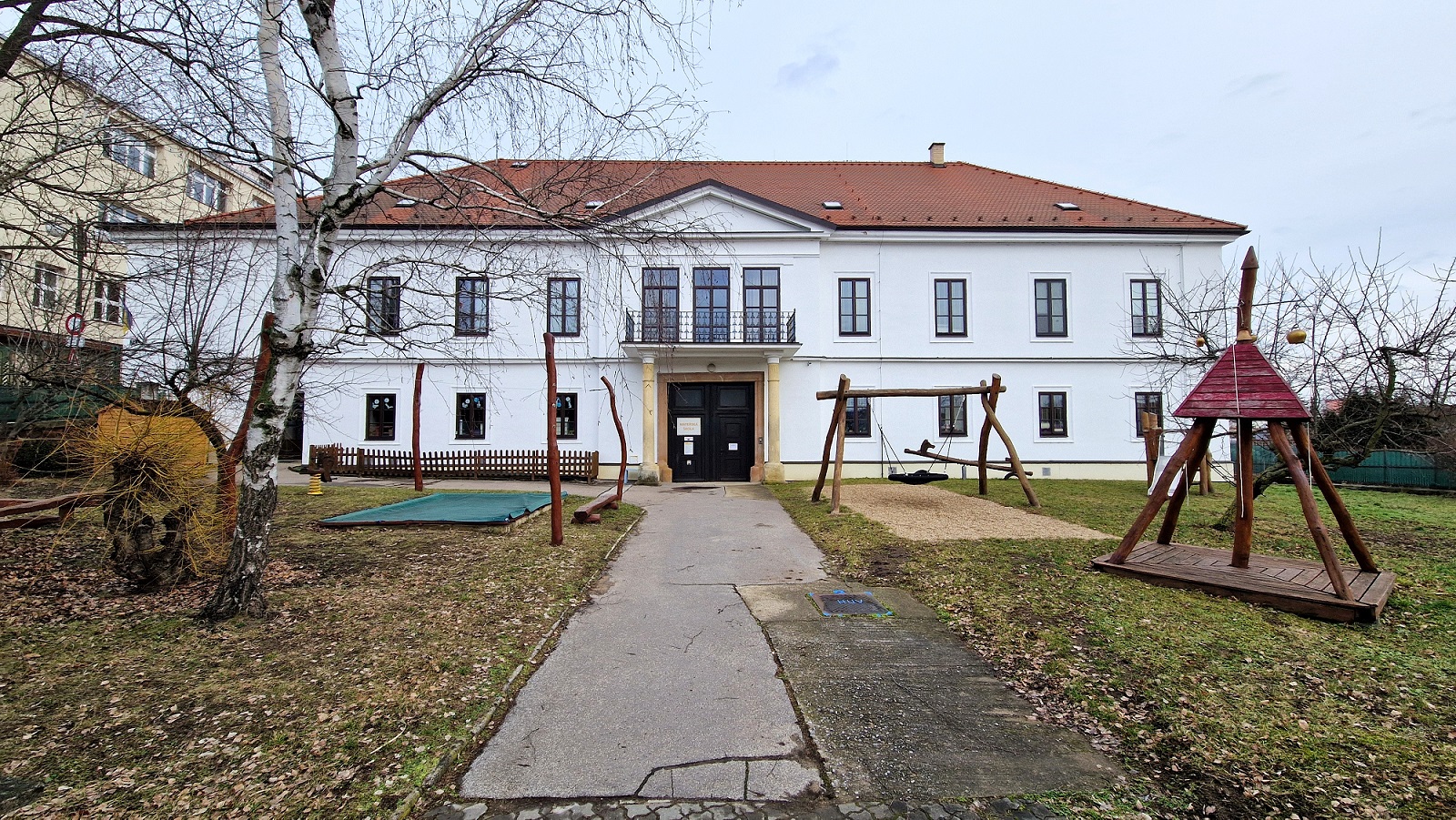
Kociánka Centre

Barrier-free access
The Kociánka Centre complex in Brno’s Královo Pole district, has developed gradually from a Classicist chateau, through a Functionalist building by Oskar Poříška, to a modern set of structures expanding the capacity of the complex along with a spacious garden, a swimming pool, a gym, and other facilities.
The inception of the Kociánka Centre dates back to 1919 when, upon the initiative of Dr. Alice Masaryková, daughter of the Czechoslovak President T.G. Masaryk, the Classicist chateau with its extensive English park was transferred from the ownership of the Moravian Agrarian and Industrial Bank to that of the private Provincial Association for the Treatment and Education of Disabled Individuals in Moravia. The purpose of this association was to provide care, treatment for physical disabilities, and both general and vocational education for individuals to ensure they could be independence in their daily life. Construction of a new building with flats for teachers and specialized instructions and overnight facilities for young people began in late 1923, followed by the construction of a two-storey hospital building (today’s pavilion C) of the healthcare section in 1925. In 1928, a comprehensive plan was approved for the construction of several pavilions, boarding facilities, schools, auxiliary buildings, institutional gardens, and farms, and the first stage of a building with workshops for working on handicrafts was constructed Subsequent years saw the construction of the main part of the building for training workshops (pavilion G), kitchens, a laundry, an outdoor pool, and in 1932 the Functionalist Social Care Institute for Physically Disabled Youth (pavilion B) by the architect Oskar Poříška. The last structures before World War II included pavilions D, E, and F, serving as a school with a covered gymnasium and boarding facilities for physically disabled pupils, which still functions as the Kociánka primary and nursery school today.
Further constructions that had been planned, such as the Roosevelt Hospital and an institute for treating children affected by polio. were halted by the expansion of the Gottwald Works (today’s Královopolské strojírny). In 1954, a vocational school was established within what was then called the Children’s Institute for the Physically Disabled as a basic vocational school for youth requiring special care. The institution’s park features several sculptures and busts, among them a bust of the first Director, Jan Chlup, unveiled during the 50th anniversary celebrations of the institute. In 1980, psychological and psychotherapeutic care was introduced at the institute, a secondary vocational school was set up with eight newly designed study fields, and the first year of the secondary economic school for physically disabled and health-challenged youth was opened. In the late 1980s, another pavilion T was built between pavilions B and G as a standalone gymnasium, and Sports Club Kociánka was created.
In 2013, the institute underwent changes and improvement through the Transformation of Social Services project. Its new name became Kociánka Centre, a state-subsidized organization under the Ministry of Labour and Social Affairs. In that same year, the reconstruction of the former Classicist chateau with sheltered housing flats, spaces for the Kociánka nursery school, and two educational halls was completed. Employing a modern approach to specialized social and healthcare services, the Kociánka Centre focuses on comprehensive rehabilitation for children and adults with physical disabilities, promoting education, integration into society, and comprehensive healthcare.
For loading the interactive map, please click on the map area.
For loading the interactive map, please click on the map area.